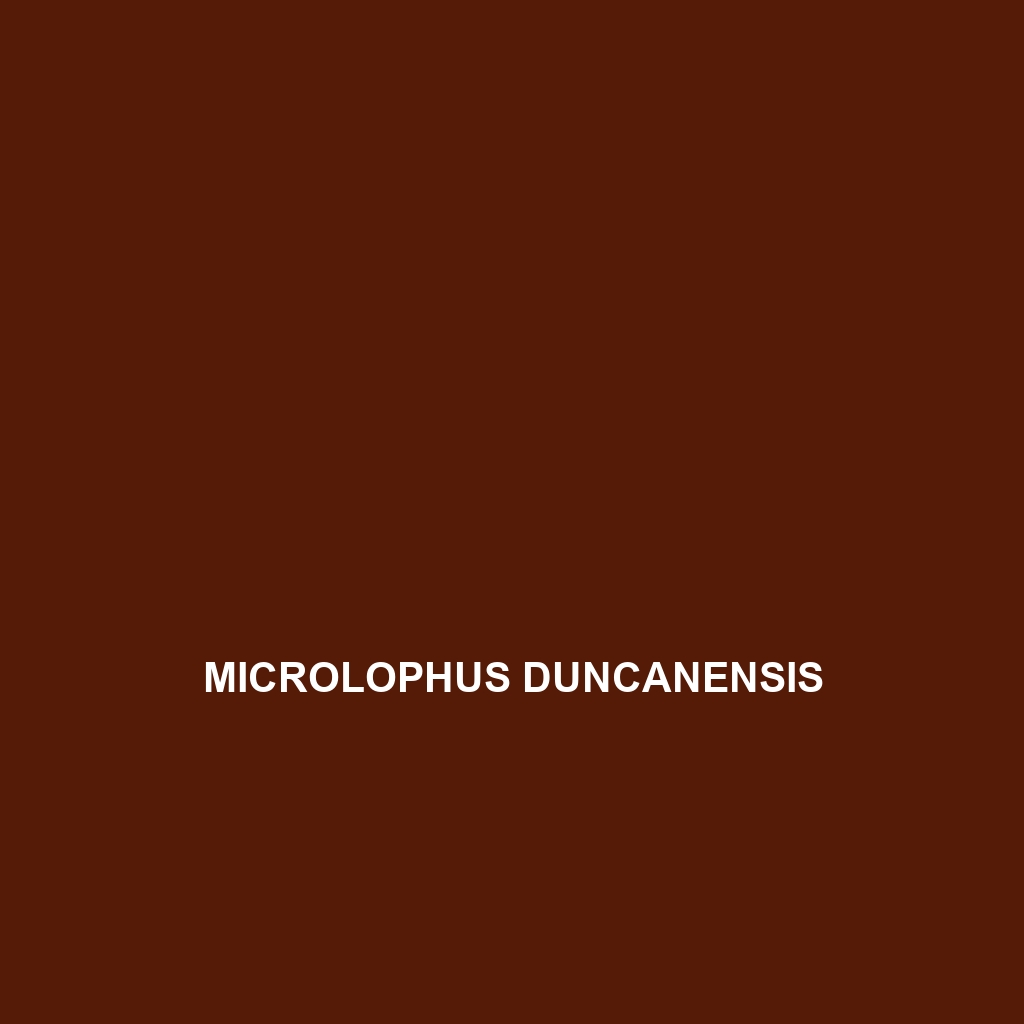Common Name
Microlophus duncanensis
Scientific Name
Microlophus duncanensis
Habitat
Microlophus duncanensis is primarily found in the beautiful and diverse regions of the Galápagos Archipelago, particularly on Duncan Island. This unique lizard thrives in a variety of habitats, including arid coastal zones and rocky areas where vegetation is sparse. The climate of Duncan Island features warm temperatures and seasonal rainfall, creating a semi-arid environment that is critical for the survival of this species. Typical habitats include
savannas,
marine habitats, and
temperate forests where the ecosystem supports a variety of flora and fauna.
Physical Characteristics
Microlophus duncanensis is a medium-sized lizard, measuring approximately 15 to 20 centimeters in length. This species has a robust body covered in a unique blend of colors that provide effective camouflage. The coloration typically involves a pattern of browns, greens, and grays, allowing it to blend seamlessly into its rocky surroundings. One of its distinctive features is the presence of granular scales that aid in moisture retention, enhancing its survival in a relatively dry environment. The head is relatively broad with a pronounced snout, and it has well-developed limbs that allow for agile movement across rocky terrains.
Behavior
Microlophus duncanensis exhibits primarily diurnal behavior, being active during the day and retreating into crevices or under rocks during the heat of midday. Social interactions are notable; these lizards are often seen basking in groups, particularly in the mornings, to absorb warmth from the sun. During mating season, males engage in elaborate displays, which may include head-bobbing and push-up movements to attract females and assert dominance over territory. Their mating rituals are fascinating, contributing to the social structure within their populations. Besides, these lizards demonstrate a strong territorial instinct, with males chasing away intruders who venture too close to their claimed areas.
Diet
As an omnivore, Microlophus duncanensis has a varied diet that includes both plant matter and small invertebrates. Its diet is primarily composed of fruits, leaves, and flowers, supplemented with insects and small arthropods, ensuring a balanced intake of nutrients. The lizard forages actively during daylight hours, using its keen eyesight to spot food sources among vegetation and rocks. This flexible feeding behavior allows it to thrive in its natural habitat, adapting to seasonal food availability by modifying its diet accordingly.
Reproduction
The reproductive cycle of Microlophus duncanensis occurs seasonally, typically during the warmer months when environmental conditions are more favorable. Males engage in courtship displays to attract females, and after a successful mating, the female lays between 2 to 6 eggs. The incubation period usually lasts around 60 days, after which the hatchlings emerge relatively independent and ready to navigate their harsh surroundings. Parental care is minimal; however, the initial survival instincts of the offspring are crucial for their development in a competitive ecosystem.
Conservation Status
Currently, Microlophus duncanensis is classified as vulnerable due to habitat loss and invasive species threatening its natural environment. Conservation efforts are underway, spearheaded by organizations focused on protecting the Galápagos ecosystem. These efforts aim to restore native habitats and control invasive species that disrupt the natural balance. Ongoing ecological studies are vital to understanding the impact of climate change on this species and ensuring it remains a resilient part of the Galápagos fauna.
Interesting Facts
One of the most intriguing aspects of Microlophus duncanensis is its ability to thrive in such a harsh environment. This species has developed unique adaptations, including its specialized scales for moisture conservation and a high tolerance for varying temperatures. Furthermore, they have been observed engaging in social grooming behaviors, which serve to strengthen social bonds among individuals, something not commonly seen in other lizard species. Their resilience and adaptability make them a fascinating subject for further study in evolutionary biology.
Role in Ecosystem
Microlophus duncanensis plays a vital role in the ecological integrity of the Galápagos Islands. As both predator and prey, it contributes to the regulation of insect populations while serving as a food source for larger predators. Its activities support the health of the ecosystem by participating in seed dispersal through the consumption of fruits. As a result, this lizard is considered an important component of its ecosystem, helping maintain ecological balance and promoting biodiversity within its habitat.
